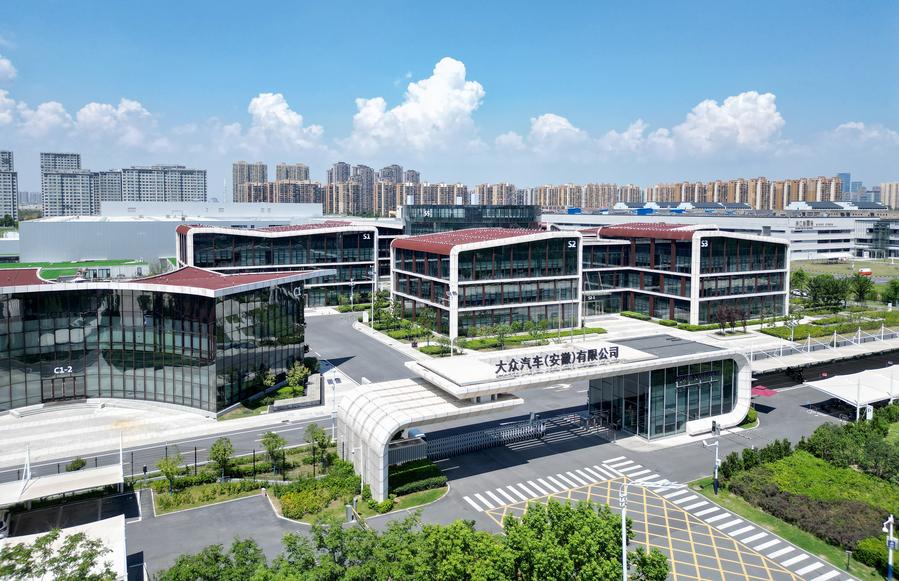
An aerial photo taken on Aug 20, 2023 shows a view of Volkswagen (Anhui) Automotive Company Limited in Hefei, East China’s Anhui province. [Xinhua/Guo Chen]
TIANJIN — In the face of China’s rapid growth of electric mobility, Volkswagen Group is revving up its investment in the electrification shift in a bid to expand its presence in the Chinese market.
More than 30 all-electric models of all its brands will be on offer in China alone by 2030, according to the German carmaker.
In 2023, production and sales of new energy vehicles (NEVs) exceeded 9.58 million and 9.49 million units in China, surging 35.8 percent and 37.9 percent year-on-year, respectively, data from the China Association of Automobile Manufacturers showed.
Moreover, China’s production and sales of NEVs account for more than 60 percent of the world’s total last year, ranking first in the world for nine consecutive years.
With a consistent “In China, for China” approach, Volkswagen continues to drive localization and strengthens the alignment of its products with the needs of Chinese customers.
In the latest strategic milestone, Volkswagen is further expanding its production and innovation hub in Hefei, capital of East China’s Anhui province, with investments totaling 2.5 billion euros ($2.67 billion).
Volkswagen (China) Technology Company (VCTC), the group’s 100 percent owned subsidiary based in Hefei, is the central unit responsible for product localization and, in close collaboration with the joint venture partners, has taken on central development tasks.
VCTC is also developing the first China-specific electric architecture, the China Main Platform (CMP), on which at least four additional models for the electric entry-level segment in the compact class will be built from 2026.
In addition to the expansion of research and development capacity, preparations are also being made for the production of two Volkswagen brand models, which are currently being developed together with Chinese partner Xpeng. Production of the first model, an SUV in the mid-size segment, will begin as early as 2026.
“Today, around 50 million customers in China drive a group (Volkswagen) product. The basis for our success is the cooperation with our strong joint venture partners, SAIC and FAW. Together, we are now accelerating the transformation towards smart electric mobility,” said Ralf Brandstätter, member of the board of management of Volkswagen AG for China.
Tianjin Economic-Technological Development Area in North China’s Tianjin municipality is also an important core parts production base of Volkswagen Group in China.
In February this year, the Tianjin branch of VCTC was set up as an important part of the research and development institution of Volkswagen Group, aiming at enhancing research, development and production capability in core components of NEVs.
Data released by the Federal Statistical Office of Germany in mid-February showed that in 2023, the trade volume between Germany and China stood at 253.1 billion euros, with China being Germany’s largest trading partner for the eighth consecutive year.
“Our new production and development hub in Hefei will bring technologies to market around 30 percent faster in the future. This additional investment in the site underlines our ambition to quickly expand our local innovative strength,” Brandstätter added.
